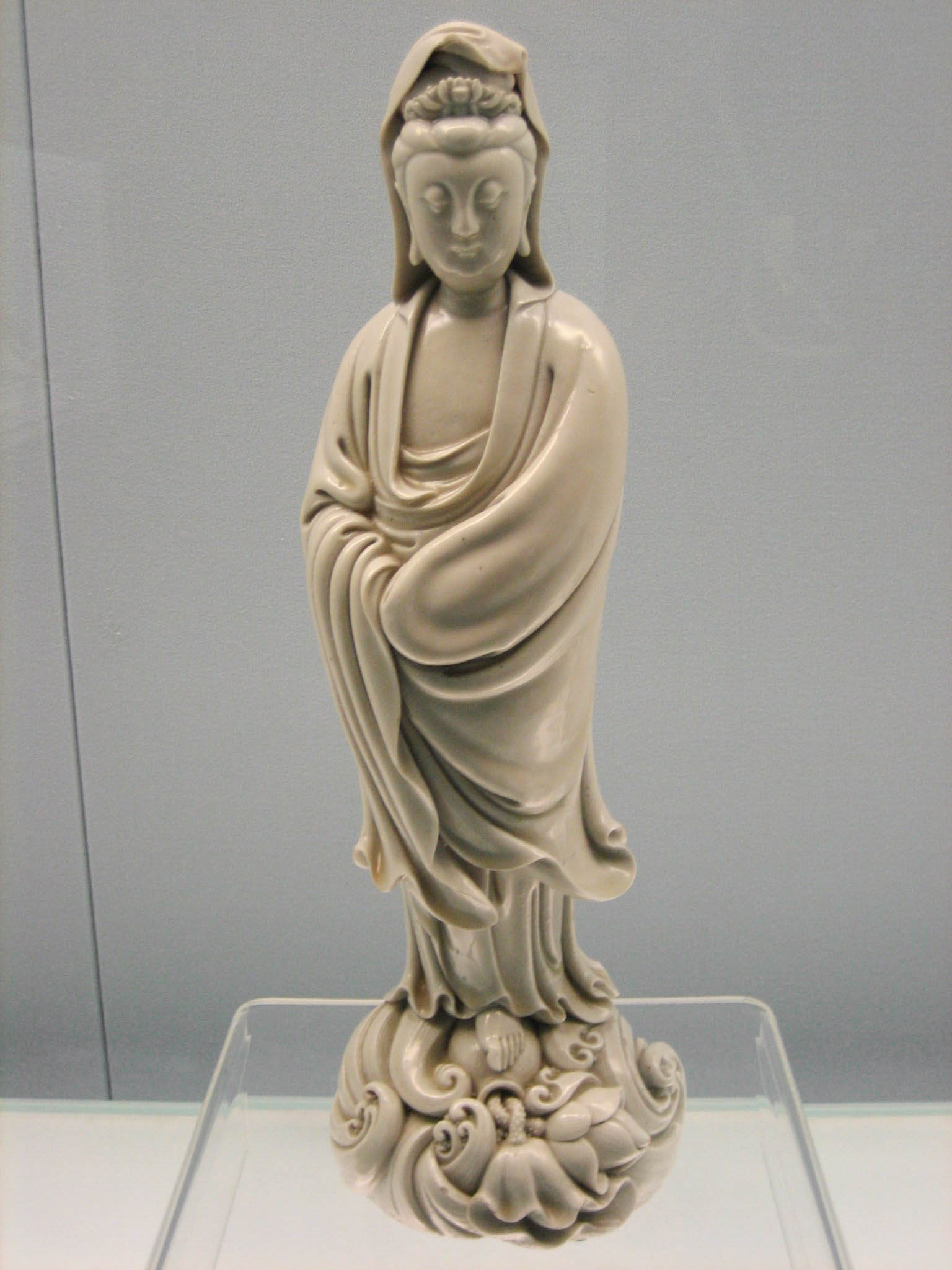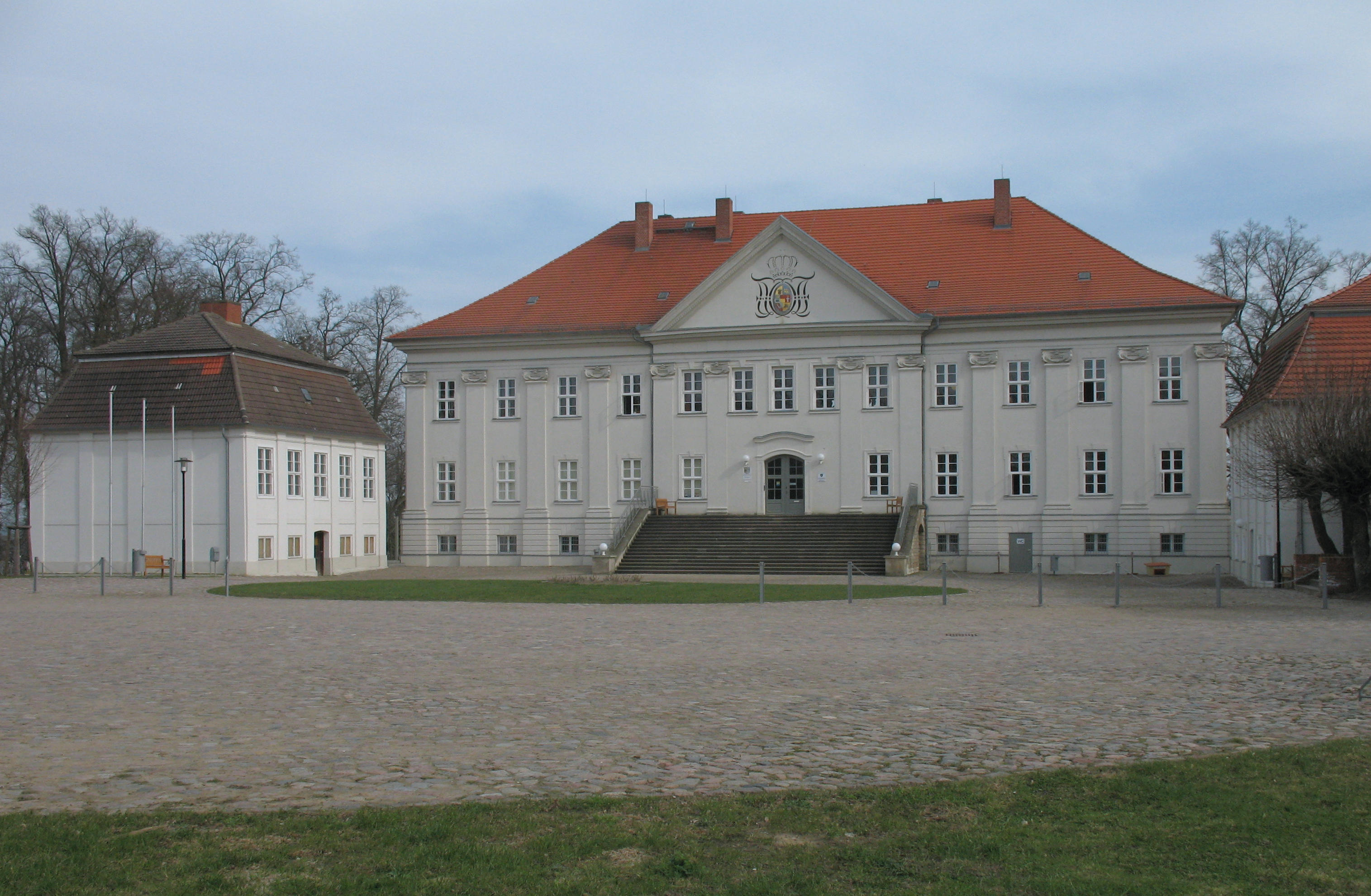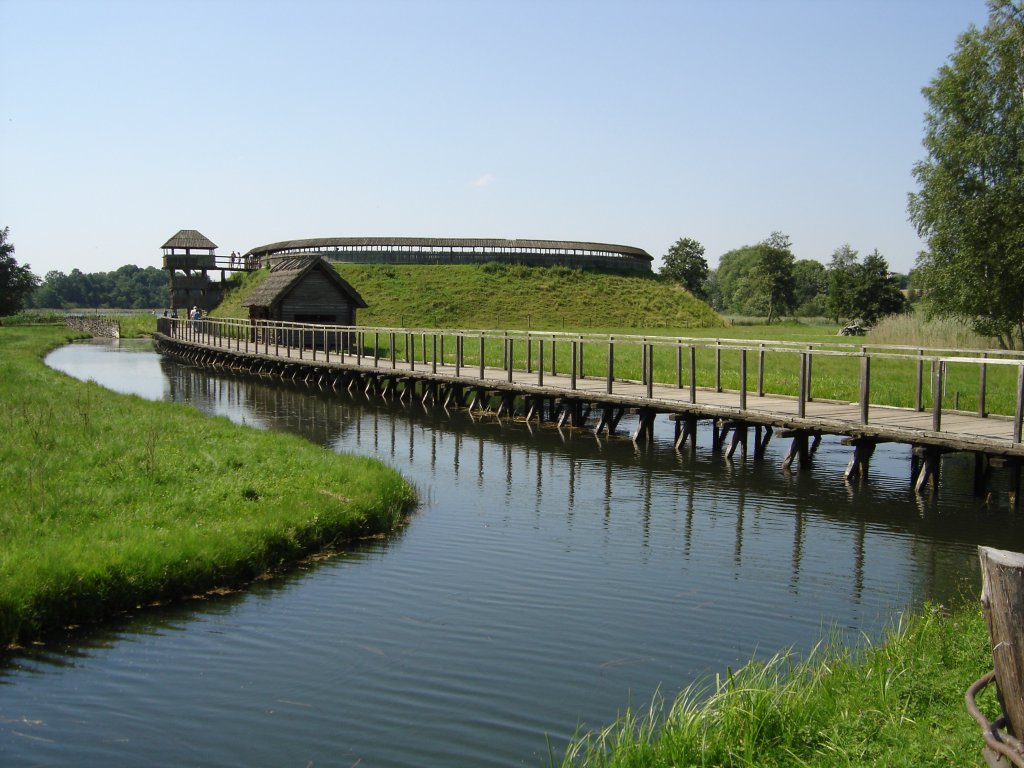|
Prillwitz Idols
Prillwitz idols is a large number of bronze figurines and bronze relief plates allegedly found in late 17th century. The first publication about them, in 1768, further claimed that the figurines found by the village of Prillwitz (now part of Hohenzieritz) came from a pagan shrine in Rethra, a major town of Polabian Slavs, and Prillwitz is the location of Rethra."Słowo o bałwankach przylwickich", in: Franciszek Piekosiński, Kamienie mikorzyńskie', Kraków, 1896 While the story was questioned from the very beginning, many experts believed their authenticity, and disputes about them continued well into the 19th century. Finally, with the progress in research techniques in archaeology have led to the conclusion that the technique of some of the molds was from recent times, while others, while being apparently authentic, had no evidence of the connection with Slavic peoples. [...More Info...] [...Related Items...] OR: [Wikipedia] [Google] [Baidu] |
Figurine
A figurine (a diminutive form of the word ''figure'') or statuette is a small, three-dimensional sculpture that represents a human, deity or animal, or, in practice, a pair or small group of them. Figurines have been made in many media, with clay, metal, wood, glass, and today plastic or resin the most significant. Ceramic figurines not made of porcelain are called terracottas in historical contexts. Figures with movable parts, allowing limbs to be posed, are more likely to be called dolls, mannequins, or action figures; or robots or automata, if they can move on their own. Figurines and miniatures are sometimes used in board games, such as chess, and tabletop role playing games. The main difference between a figurine and a statue is size. There is no agreed limit, but typically objects are called "figurines" up to a height of perhaps , though most types are less than high. Prehistory In China, there are extant Neolithic figurines. European prehistoric figurines of wome ... [...More Info...] [...Related Items...] OR: [Wikipedia] [Google] [Baidu] |
Relief
Relief is a sculptural method in which the sculpted pieces are bonded to a solid background of the same material. The term ''relief'' is from the Latin verb ''relevo'', to raise. To create a sculpture in relief is to give the impression that the sculpted material has been raised above the background plane. When a relief is carved into a flat surface of stone (relief sculpture) or wood (relief carving), the field is actually lowered, leaving the unsculpted areas seeming higher. The approach requires a lot of chiselling away of the background, which takes a long time. On the other hand, a relief saves forming the rear of a subject, and is less fragile and more securely fixed than a sculpture in the round, especially one of a standing figure where the ankles are a potential weak point, particularly in stone. In other materials such as metal, clay, plaster stucco, ceramics or papier-mâché the form can be simply added to or raised up from the background. Monumental bronze reliefs a ... [...More Info...] [...Related Items...] OR: [Wikipedia] [Google] [Baidu] |
Prillwitz
Prillwitz is a small village in Mecklenburg-Vorpommern (Mecklenburg-West Pomerania), on the shores of the lake Lieps, Germany. It is part of the municipality Hohenzieritz. It lies approximately 125 kilometres north of Berlin through the B96 or 205 kilometres through the A20. The town has a church and a small castle converted into a hotel and restaurant. See also * Prillwitz idols Prillwitz idols is a large number of bronze figurines and bronze relief plates allegedly found in late 17th century. The first publication about them, in 1768, further claimed that the figurines found by the village of Prillwitz (now part of Hohenz ... References {{authority control Villages in Mecklenburg-Western Pomerania ... [...More Info...] [...Related Items...] OR: [Wikipedia] [Google] [Baidu] |
Hohenzieritz
Hohenzieritz is a municipality in the district Mecklenburgische Seenplatte, in Mecklenburg-Vorpommern, Germany. Louise of Mecklenburg-Strelitz Duchess Louise of Mecklenburg-Strelitz (Luise Auguste Wilhelmine Amalie; 10 March 1776 – 19 July 1810) was Queen of Prussia as the wife of King Frederick William III. The couple's happy, though short-lived, marriage produced nine child ... died here in 1810. References {{MecklenburgischeSeenplatte-geo-stub ... [...More Info...] [...Related Items...] OR: [Wikipedia] [Google] [Baidu] |
Rethra
Rethra (also known as ''Radagoszcz'', ''Radegost'', ''Radigast'', ''Redigast'', ''Radgosc'' and other forms like ''Ruthengost'') was, in the 10th to the 12th centuries, the main town and political center of the Slavic Redarians, one of the four major Lutician tribes, located most likely in present-day Mecklenburg. It was also a major worship center, devoted to the cult of the Slavic deity Radegast- Swarożyc. Etymology The name "Radgosc" (or its close forms) derives from old Slavic and roughly translates as "hospitable" (''"radość"'' or ''"radi"'' meaning "glad" or "happy" and ''"gość"'' or ''"gost"'' meaning "guest"). In Czech, the word "radohostinství" means 'hospitality', and "radovati se" means 'to rejoice'. Alternately it may be translated as "council hosting", from "rada" (Czech, Polish, Slovak, Ukrainian) - council (also advice, counsel, committee), and "hostit" (Czech "to host"), "goszczący", "gościć" (Polish "hosting", "to host"), and relate to a place, person ... [...More Info...] [...Related Items...] OR: [Wikipedia] [Google] [Baidu] |
Polabian Slavs
Polabian Slavs ( dsb, Połobske słowjany, pl, Słowianie połabscy, cz, Polabští slované) is a collective term applied to a number of Lechitic ( West Slavic) tribes who lived scattered along the Elbe river in what is today eastern Germany. The approximate territory stretched from the Baltic Sea in the north, the Saale and the ''Limes Saxoniae''Christiansen, 18 in the west, the Ore Mountains and the Western Sudetes in the south, and Poland in the east. They have also been known as Elbe Slavs (german: Elbslawen) or Wends. Their name derives from the Slavic ''po'', meaning "by/next to/along", and the Slavic name for the ''Elbe'' (''Labe'' in Czech and ''Łaba'' in Polish). The Polabian Slavs started settling in the territory of modern Germany in the 6th century. They were largely conquered by Saxons and Danes since the 9th century and were subsequently included and gradually assimilated within the Holy Roman Empire. The tribes were gradually Germanized and assimilated in ... [...More Info...] [...Related Items...] OR: [Wikipedia] [Google] [Baidu] |
Archaeology
Archaeology or archeology is the scientific study of human activity through the recovery and analysis of material culture. The archaeological record consists of artifacts, architecture, biofacts or ecofacts, sites, and cultural landscapes. Archaeology can be considered both a social science and a branch of the humanities. It is usually considered an independent academic discipline, but may also be classified as part of anthropology (in North America – the four-field approach), history or geography. Archaeologists study human prehistory and history, from the development of the first stone tools at Lomekwi in East Africa 3.3 million years ago up until recent decades. Archaeology is distinct from palaeontology, which is the study of fossil remains. Archaeology is particularly important for learning about prehistoric societies, for which, by definition, there are no written records. Prehistory includes over 99% of the human past, from the Paleolithic until the adven ... [...More Info...] [...Related Items...] OR: [Wikipedia] [Google] [Baidu] |
Slavic Peoples
Slavs are the largest European ethnolinguistic group. They speak the various Slavic languages, belonging to the larger Balto-Slavic language, Balto-Slavic branch of the Indo-European languages. Slavs are geographically distributed throughout northern Eurasia, mainly inhabiting Central Europe, Central and Eastern Europe, and the Balkans to the west; and Siberia to the east. A large Slavic minority is also scattered across the Baltic states and Central Asia, while a substantial Slavic diaspora is found throughout the Americas, as a result of immigration. Present-day Slavs are classified into East Slavs (chiefly Belarusians, Russians, Rusyns, and Ukrainians), West Slavs (chiefly Czechs, Kashubians, Poles, Slovaks and Sorbs) and South Slavs (chiefly Bosniaks, Bulgarians, Croats, Macedonians (ethnic group), Macedonians, Montenegrins, Serbs and Slovenes). The vast majority of Slavs are traditionally Christians. However, modern Slavic nations and ethnic groups are considerably dive ... [...More Info...] [...Related Items...] OR: [Wikipedia] [Google] [Baidu] |
Slavic Neopagans
The Slavic Native Faith, commonly known as Rodnovery * bg, Родноверие, translit=Rоdnoverie * bs, Rodnovjerje * mk, Родноверие, translit=Rodnoverie * cz, Rodnověří * hr, Rodnovjerje * pl, Rodzimowierstwo; Rodzima Wiara * russian: Родноверие, translit=Rodnoverie * sk, Rodnoverie * sl, Rodnoverstvo * sr, Родноверје, translit=Rodnoverje * uk, Рідновірство; Рідновір'я, translit=''Ridnovirstvo''; ''Ridnovirya'' From some variations of the term, the English adaptations "Rodnovery" and its adjective "Rodnover(s)" have taken foothold in English-language literature, supported and used by Rodnovers themselves. and sometimes as Slavic Neopaganism, is a modern Pagan religion. Classified as a new religious movement, its practitioners hark back to the historical belief systems of the Slavic peoples of Central and Eastern Europe, though the movement is inclusive of external influences and hosts a variety of currents. ... [...More Info...] [...Related Items...] OR: [Wikipedia] [Google] [Baidu] |
Radegast
Radegast () is a small town in the district of Anhalt-Bitterfeld in Saxony-Anhalt, Germany. It is the smallest town in Saxony-Anhalt and is located about 13 km south of the district capital of Köthen. Since 1 January 2010, it is part of the town Südliches Anhalt. Geography Radegast is located midway between the cities of Köthen (Anhalt), Wolfen, Bitterfeld and Dessau. Geographical Situation The area of Radegast borders on the national park "Cösitzer Teich" in the southeast and on the conservation park "Fuhneaue" in the south. Geology Radegast is situated at the margin of the Köthen culture plain. Here it ascends from the Fuhne valley, so the difference in height is about on a short distance. The town is situated right in the middle of a former swampland. The upper level of this swamp has been quite fertile for a long time. The official Radegast Chronicle says, "the lower level of the soil in this area is not bad, but its value is lowered because it is too damp ... [...More Info...] [...Related Items...] OR: [Wikipedia] [Google] [Baidu] |
Triglav
Triglav (; german: Terglau; it, Tricorno), with an elevation of , is the highest mountain in Slovenia and the highest peak of the Julian Alps. The mountain is the pre-eminent symbol of the Slovene nation. It is the centrepiece of Triglav National Park, Slovenia's only national park. Triglav was also the highest peak in Yugoslavia before Slovenia's independence in 1991. Name Various names have been used for the mountain through history. An old map from 1567 named it ''Ocra mons'', whereas Johann Weikhard von Valvasor named it ''Krma'' in the second half of the 17th century. According to the German mountaineer and professor Adolf Gstirner, the name ''Triglav'' first appeared in written sources as ''Terglau'' in 1452, but the original source has been lost. The next known occurrence of ''Terglau'' is cited by Gstirner and is from a court description of the border in 1573. Early forms of the name ''Triglav'' also include ''Terglau'' in 1612, ''Terglou'' in 1664 and ''Terklou'' arou ... [...More Info...] [...Related Items...] OR: [Wikipedia] [Google] [Baidu] |



.jpg)
.jpg)
